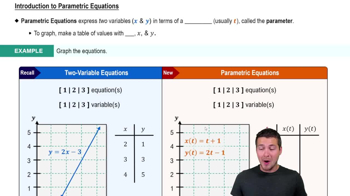Here are the essential concepts you must grasp in order to answer the question correctly.
Polar Coordinates
Polar coordinates represent points in a plane using a distance from a reference point (the origin) and an angle from a reference direction (usually the positive x-axis). In this system, a point is defined by the coordinates (r, θ), where 'r' is the radial distance and 'θ' is the angle. Understanding polar coordinates is essential for converting polar equations to rectangular form.
Recommended video:
Intro to Polar Coordinates
Rectangular Coordinates
Rectangular coordinates, also known as Cartesian coordinates, represent points in a plane using two perpendicular axes (x and y). The relationship between polar and rectangular coordinates is given by the equations x = r cos(θ) and y = r sin(θ). Converting polar equations to rectangular form involves using these relationships to express the equation in terms of x and y.
Recommended video:
Convert Points from Polar to Rectangular
Graphing Equations
Graphing equations involves plotting points on a coordinate system to visualize the relationship defined by the equation. For polar equations converted to rectangular form, understanding how to interpret the resulting x and y values is crucial for accurately representing the graph. This process helps in identifying key features such as intercepts, symmetry, and overall shape of the graph.
Recommended video:
Introduction to Parametric Equations
 Verified Solution
Verified Solution



 5:32m
5:32m
